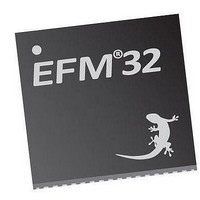EFM32-TG822F32-SK Energy Micro, EFM32-TG822F32-SK Datasheet - Page 4

EFM32-TG822F32-SK
Manufacturer Part Number
EFM32-TG822F32-SK
Description
MCU, MPU & DSP Development Tools TG822 Sample Kit
Manufacturer
Energy Micro
Datasheet
1.EFM32-TG822F32-SK.pdf
(64 pages)
Specifications of EFM32-TG822F32-SK
Processor To Be Evaluated
EFM32
Lead Free Status / RoHS Status
Lead free / RoHS Compliant
Available stocks
Company
Part Number
Manufacturer
Quantity
Price
Company:
Part Number:
EFM32-TG822F32-SK
Manufacturer:
EnergyMi
Quantity:
17
2.1.4 Direct Memory Access Controller (DMA)
2.1.5 Reset Management Unit (RMU)
2.1.6 Energy Management Unit (EMU)
2.1.7 Clock Management Unit (CMU)
2.1.8 Watchdog (WDOG)
2.1.9 Peripheral Reflex System (PRS)
2.1.10 Inter-Integrated Circuit Interface (I2C)
2012-02-27 - EFM32TG822FXX - d0052_Rev0.95
divided into two blocks; the main block and the information block. Program code is normally written to
the main block. Additionally, the information block is available for special user data and flash lock bits.
There is also a read-only page in the information block containing system and device calibration data.
Read and write operations are supported in the energy modes EM0 and EM1.
The Direct Memory Access (DMA) controller performs memory operations independently of the CPU.
This has the benefit of reducing the energy consumption and the workload of the CPU, and enables
the system to stay in low energy modes when moving for instance data from the USART to RAM or
from the External Bus Interface to a PWM-generating timer. The DMA controller uses the PL230 µDMA
controller licensed from ARM.
The RMU is responsible for handling the reset functionality of the EFM32TG.
The Energy Management Unit (EMU) manage all the low energy modes (EM) in EFM32TG microcon-
trollers. Each energy mode manages if the CPU and the various peripherals are available. The EMU
can also be used to turn off the power to unused SRAM blocks.
The Clock Management Unit (CMU) is responsible for controlling the oscillators and clocks on-board
the EFM32TG. The CMU provides the capability to turn on and off the clock on an individual basis to all
peripheral modules in addition to enable/disable and configure the available oscillators. The high degree
of flexibility enables software to minimize energy consumption in any specific application by not wasting
power on peripherals and oscillators that are inactive.
The purpose of the watchdog timer is to generate a reset in case of a system failure, to increase appli-
cation reliability. The failure may e.g. be caused by an external event, such as an ESD pulse, or by a
software failure.
The Peripheral Reflex System (PRS) system is a network which lets the different peripheral module
communicate directly with each other without involving the CPU. Peripheral modules which send out
Reflex signals are called producers. The PRS routes these reflex signals to consumer peripherals which
apply actions depending on the data received. The format for the Reflex signals is not given, but edge
triggers and other functionality can be applied by the PRS.
The I
both a master and a slave, and supports multi-master buses. Both standard-mode, fast-mode and fast-
mode plus speeds are supported, allowing transmission rates all the way from 10 kbit/s up to 1 Mbit/s.
Slave arbitration and timeouts are also provided to allow implementation of an SMBus compliant system.
The interface provided to software by the I
process and close to automatic transfers. Automatic recognition of slave addresses is provided in all
energy modes.
2
C module provides an interface between the MCU and a serial I
2
C module, allows both fine-grained control of the transmission
...the world's most energy friendly microcontrollers
4
2
C-bus. It is capable of acting as
www.energymicro.com












